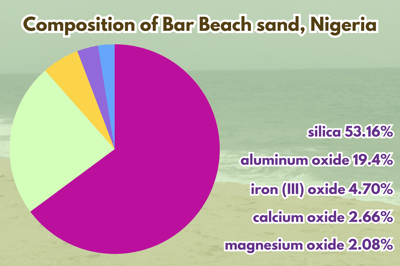Surprising Facts about Sand - Kesler Science Weekly Phenomenon and Graph
I'll admit - I usually take sand for granted. It just seems to be everywhere, and usually where I don't want it to be. 😬
Then I came across this quote from Rachel Carson, and it really got me thinking:
"In every outthrust headland, in every curving beach,
in every grain of sand there is the story of the earth."
Sand represents the passage of history on our planet. The processes that create sand grind on through the ages - literally!
Geological sand is the product of erosion on rocks and minerals, while biological sand is broken down remnants of life--corals, shells, skeletons, etc. Even parrotfish get in on the action, chewing up coral and turning it into sand. Yes, some of that beautiful white sand is... parrotfish poop. 😆
Sand is incredibly important. If we're talking about beach sand, there are entire ecosystems that rely on it. Worms, clams, and crustaceans bury themselves in sand during low tide. They turn into a buffet for shore birds that spot these hidden snacks. Sea turtles and sea birds build sand nests. Coastal life is built on a foundation of sand!
Sand is important to humans, too. Coastal towns dredge up sand to build dunes that prevent erosion and property damage during intense storms. It's also an essential ingredient for construction; speaking of foundations, sand is the key to cement! We also use it for glass production, water filtration, computer chips... the list is extensive.
Sand is so valuable to humans, there's a $100 billion global market for it, and some groups even trade it illegally. 😯
The value of sand relies partly on its silica content. In some places, the percentage of silica can be as high as 97%. That percentage can vary widely, though, based on location.

.png?width=400&height=267&name=Sand%20Composition%20Graph(1).png)
I remember thinking once, "Why is there so much demand for sand - don't we have deserts full of the stuff?"
Fun fact: desert sand is useless for most purposes. We need sand that is has rough edges that lock together; desert sand has been tumbled around until it's smooth and round.
That doesn't mean desert sand isn't impressive, though. When desert sands are pushed and piled by wind over thousands of years, desert sand dunes can reach mountainous proportions! Check out this graph of some of the tallest desert sand dunes:
.png?width=600&height=400&name=Sand%20Composition%20Graph(2).png)
The Duna Federico Kirbus in Argentina is taller than the highest point in 21 of the 50 U.S. states!
Sand is an amazing topic to explore in science. Have you ever walked on soft, uniform sand? What about coarse sand, scattered with shells or large pebbles? The feeling under your feet has everything to do with the wave action happening in that area. If the beach has high energy water waves with long wavelengths, the sand is smooth and fine. Sand that is rough on the toes was formed by low energy water waves with short wavelengths.
There is so much to discover about sand - I'd love to hear what other great facts you dig up! 😉
- Chris
By the way, if I were to bring this graph to students in my classroom, here are some questions I'd ask to go along with it:
💡Which sand dunes are above 1,000 meters in height? Where are they found?
💡The Eiffel Tower is 312 meters in height. How does that stack up to the sand dunes shown in the graph?
💡In a building, each story is about 3 meters tall. How many "stories" tall is the Badain Juran Desert dune in China?



